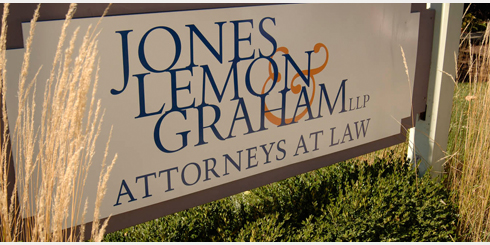Why can’t we settle and make our D&O insurer reimburse us later?
by Christopher Graham and Joseph Kelly
The issue: What if your board is sued for many millions in alleged damages well over your company’s D&O insurance limits? What if the insurer is paying for defense and doesn’t want to settle, but your company and board want to settle? What if, like many D&O policies, this policy says insureds may not settle without insurer consent, but also says consent may not be unreasonably withheld? What if the policy, like many D&O policies, also includes a “no action” clause saying you can’t sue the insurer for a settlement unless the insurer agrees to settle? What if there was a probability or possibility of damages well over limits? You may cajole your insurer into settling by raising its duty to settle, where there’s risk of liability excess of limits. But if you fail, can you settle without consent and successfully sue to make the insurer pay?
Part 1 of the story: the registration statement, tender offers, and board responses: Freddie Financier is board chairman of Bricks and Mortar REIT, a real estate investment trust. Bricks wants to list its shares on the New York Stock Exchange and sell up to $345 million of its stock in an initial public offering. Going public. Very big deal. It files a registration statement with the securities gods aka the Securities Exchange Commission.
Fiona Financier wants a piece of Bricks. Just after Bricks files its registration statement, Fiona’s company, Tender Offeror Inc., makes a tender offer to acquire just over 5% of Bricks’ shares and files related paperwork with securities gods.
But Bricks’ directors recommend against the offer. In their filings, they explain that their recommendation is based largely on Bricks’ business plan as disclosed in the registration statement, including the potential national exchange listing, and their belief that the offer was timed to take advantage of a share price increase due to the listing.
Fiona’s Tender Offeror then offers to buy more shares, over 9%, at a higher price! But Bricks’ directors, including Freddie, still recommend against the offer. Bricks’ filings don’t reference the registration statement or potential listing.
The original and revised tender offers expire. The IPO doesn’t happen. And the bricks hit the fan.
Part 2 of the story, the securities class action: Bricks’ shareholder, County Pension, sues Bricks and its directors and officers for securities fraud. County sues for a class of similarly situated investors; over $150 million in alleged damages. And Bricks has only $20 million in D&O insurance limits, split between $10 million primary and $10 million excess policies. And before you know it, the $10 million primary policy is devoured by the lawyers.
But then good news: district judge says Bricks and its board and management win based on the law. Summary judgment!
But then bad news: County Pension appeals.
Now what?
Part 3 of the story: the mediation and settlement: “Let’s mediate,” Freddie and Bricks decide. County agrees. Excess D&O insurer sends Connie Claims, an experienced D&O claims lawyer. Everyone agrees to use Malcolm Mediator, skilled in D&O litigation and insurance.
After starting out the usual way–County demands $158 million and Connie Claims offers $50,000–Malcolm works his magic, justifying his $1000 per hour mediator’s fee: County eventually demands the remaining $6 million D&O insurance limit from Connie’s company. Bricks, including Freddie, then ask Connie to pay the limits to settle.
But Connie says no. She tells Malcolm, “Bricks just defeated County’s claims by summary judgment. Yes, there’s an appeal. But we don’t see any reason to contribute more than $1 million to settle.”
Bricks and Freddie demand that Connie settle. They tell Malcolm, “Yes, we won on summary judgment, but County appealed. Damages are enormous. And if County succeeds, the limits won’t last given how the lawyers devour them. We have significant exposure. Connie and her company have a duty to act fairly and in good faith. That includes a duty to settle a lawsuit that may expose our company’s assets and our directors’ and officers’ assets to a judgment exceeding insurance limits. Connie’s company also promised not to unreasonably withhold consent to settlement. Connie’s breaking that promise. Connie needs to agree to pay limits now!”
Malcolm hammers away on Connie. But Connie Claims holds firm. Malcolm doesn’t get the deal done at mediation. And Freddie has a decision:
Connie won’t pay limits. County won’t take less than limits. Should Bricks settle without Connie’s consent? If Freddie doesn’t settle, County might win on appeal. Then what? “It will take a lot more then limits to settle,” Freddie thinks. Freddie also thinks, “If we get hit with an excess of limits judgment, we may be hold Connie’s company responsible, but we can’t take a chance. Damages are enormous. Our limits will be gone just for defense fees. It’s better to settle, get rid of the exposure, and sue Connie’s company for reimbursement: Connie after all is unreasonably withholding consent.”
Bricks by letter to Connie demands that her company pay the $4.9 million Bricks agreed to pay to settle County’s securities suit and threatens statutory bad faith claims.
Connie responds that her company doesn’t have to pay anything because Bricks settled without seeking her company’s consent. Consent wasn’t unreasonably withheld because it wasn’t sought. Bricks claims it was sought, including immediately before mediation when Bricks asked for authority to settle for up to the remaining limit of Connie’s company’s excess policy.
The district court approves Bricks’ settlement of County’s securities class action.
And Bricks again demands that Connie’s company pay the $4.9 million and again threatens statutory bad faith claims.
Connie’s company contributes $1 million towards settlement as promised during mediation, but not the additional $3.9 million Bricks agreed to pay without her consent.
Part 4 of the story: the coverage litigation: Bricks sues Connie’s company for breach of contract and bad faith. How will the court resolve the case? Does it matter that the policy required Connie’s company’s consent to settle? Or that the policy has a no action clause? Or that while consent is required, Connie’s company may not withhold consent unreasonably? Or that the insuring agreement provides for coverage only of amounts that the Bricks’ “is legally obligated to pay”?
Part 5 of the story: the decision: In Piedmont Office Realty Trust, Inc. v. XL Specialty Insurance Co.*, Case No. 1:13-cv-02128-WSD (N.D. Ga. Mar. 28, 2014), involving a fact pattern somewhat like our story, a Georgia federal judge held that the REIT in Bricks’ shoes had no right to recoup the $3.9 million settlement from the excess D&O insurer.
Focusing on the policy’s consent-to-settle clause, the court explained:
A plain reading of the consent-to-settle language in the contract is that a settlement may not be made without the insurer’s consent to the settlement. The unambiguous language of the provision also is that if the [insurer] unreasonably withholds consent to a settlement agreement reached by the [company], the [company] can assert a claim for breach of the insurance agreement assuming that a judgment after an actual trial is entered against the [company], which exceeds the agreed amount of the potential settlement that [company] had proposed to agree to with a third party. This interpretation is consistent with an insurer’s implied duty—regardless of whether that duty is expressed in a written agreement—to “give equal consideration to the interests of the insured” in deciding whether to consent to a settlement agreement.
Rejecting the company’s argument that insurer unreasonably withheld consent, the court stated:
[A]n insurance contract is not breached and consent cannot be deemed to have been unreasonably withheld until there is a finding regarding [company’s] liability, not just [company’s] discretion based on its perceived risk of failing to prevail in the case and its business interest to eliminate its exposure by settling the Securities Action.
Further:
“Liability policies generally include provisions that prohibit an insured from settling claims without the insurer’s approval. These provisions enable insurers to control the course of litigation concerning such claims, and also serve to prevent potential fraud, collusion and bad faith on the part of the insureds.” . . . If an insurer refuses to consent and, as a result, the insured does not settle and thereafter loses on the underlying claim, the insurer may be liable for the amount of the judgment and, if that award is greater than the coverage, for damages that could be well in excess of the insurance policy limits.
In reaching its decision, the court also concluded that a voluntary settlement payment didn’t amount to “legal obligation to pay” as required for coverage under the policy’s insuring clause. According to the court:
Under Georgia law, an agreement to settle a claim is a “voluntary payment [that] does not constitute a legal obligation.” . . . In the case here, [company’s] insurance contract with [D&O insurer] provides for the payment of claims and defense costs only if the [company] is “legally obligated” to pay a securities claim. The [D&O insurer] is not obligated to pay any claims or costs arising out of a securities claim if the [company] did not have a legal obligation to pay the settlement amount, and the [D&O insurer] did not consent to pay the settlement amount.
The court also concluded that the policy’s no action clause barred the company’s claim, explaining
The “no action” provision provides that the [D&O insurer] may be sued only if the [company] complies with all terms of the agreement, “and the amount of the [company’s] obligation to pay shall have been finally determined either by judgment against the [company] after actual trial, or by written agreement of the [company], the claimant and the [D&O insurer].”
Comments: According to this Georgia court, an insurer’s consent isn’t “unreasonably withheld” unless there’s a judgment against the company exceeding the policy limits. So as a practical matter, at least when an an insurer hasn’t otherwise breached a duty to the policyholder, a policyholder may never settle and recoup the amount from the insurer, even if it reasonably concludes there’s a probability of a judgment excess of limits. There’s no way to prove an insurer “withheld consent” “unreasonably” other than suffering an adverse judgment and proving breach of the implied covenant of good faith and fair dealing.
The court relied on a Georgia Supreme Court decision about a duty-to-defend general liability policy having voluntary payments (consent-to-settle) and no-action clauses. But the consent clause didn’t include wording addressing withholding consent unreasonably.
Because of the way the court ruled, it didn’t address whether there was a probability of a judgment against the company and its board and management exceeding limits. It didn’t matter, as far as this court was concerned. Perhaps there wasn’t that sort of risk. After all, there had just been a summary judgment for the policyholders. Although it didn’t say so, the court perhaps didn’t think it was fair for the company, after prevailing on summary judgment, to then settle unilaterally for policy limits and expect the insurer to pay.
The court also assumed the company sought consent before settling, though the insurer suggested the company had not done so.
The appeals panel in Schwartz v, Liberty Mutual Insurance Company, 539 F.3d 135 (2d Cir. 2008), decided under California law, reached a much different result than this Georgia court. The policyholder in Schwartz settled without primary and excess D&O insurer consent and then recouped the payment from them under a bad-faith failure-to-settle theory. It wasn’t necessary to suffer a judgment exceeding policy limits to prove consent was “unreasonably withheld” or settlement was reasonable. It also didn’t even matter that the insurers had less than 24 hours, near the end of trial to consent to a $20 million settlement. The policyholder had kept the insurer closely advised of case developments, including settlement discussions–so the short fuse on responding to the request for consent wasn’t unreasonable in the circumstances. See also Hilco Capital, LP v. Federal Insurance Co., 978 A.2d 174 (Del. 2009) (applying Missouri law, affirms jury verdict where jury found by answer to special interrogatory that D&O insurer did not unreasonably withhold consent to settlement).
When a policyholder fails to seek consent, the result may be much different, unless there are circumstances relieving the policyholder of that obligation, such as a breach of an insurer’s duty to defend or pay or, in some states, a defense from the insurer under a reservation of rights. In Vigilant Insurance Co. v Bear Stearns Companies, 10 N.Y.3d 170 (2008), for example, Bear Stearns, didn’t seek consent from its D&O insurers, before entering into a “consent agreement in which it acceded to the entry of a final judgment” in a case by the SEC. So the court determined Bear Stearns’s settlement wasn’t covered. In Federal Ins. Co. v. Arthur Andersen LLP, 522 F.3d 740 (7th Cir. 2008), Arthur Anderson similarly failed to seek insurer consent to settle and lost a suit for coverage of a multi-million dollar settlement.
For policyholders and insurers, the outcome as usual will depend on state law and the unique circumstances of the case including the policy wording.
Tags: Georgia, D&O insurance, directors and officers liability insurance, management liability insurance, securities claim, legally obligated to pay, consent to settle not to be unreasonably withheld, limits demand, no action clause, settling without insurer consent, voluntary payments clause, excess of policy limits, bad faith

![MH900189590[1]](http://www.joneslemongraham.com/blog/wp-content/uploads/2014/02/MH9001895901-300x300.jpg)



